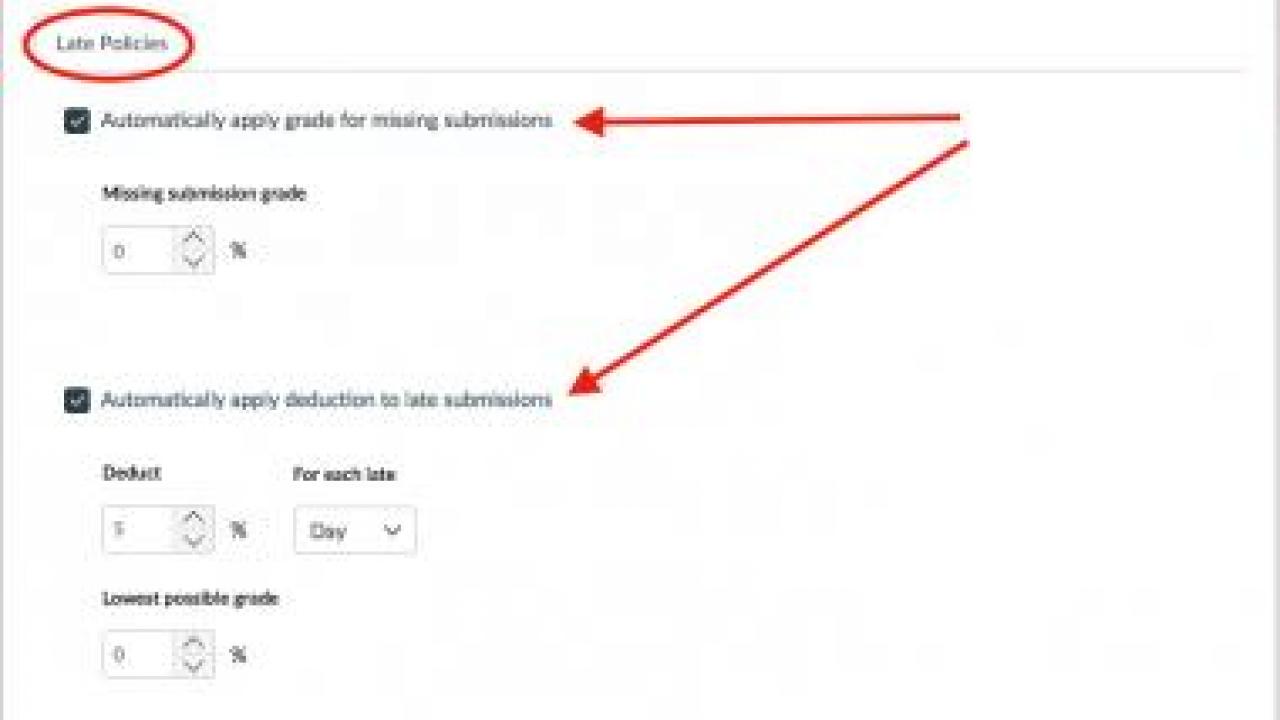
‘Late Policies’ now available in early version of New Gradebook in Canvas
Phase 1 of the New Gradebook in Canvas, now available for faculty, offers some features that UC Davis instructors have been asking about.
Faculty can use the new features by adopting the New Gradebook. The changes:
- Add policies for late and missing assignments.
- Allow instructors to rearrange the columns on the default grades tool page display.
- Allow instructors to add student identification numbers as a secondary ID to the student name menu.
The most significant of these three changes might be Late Policies, which lets instructors create automatic rules to deduct points from late assignments or to assign zeroes to missing work. The policy is applied per course, and governs all items submitted online for that course. Also, once instructors use Late Policies, they cannot revert to the current version of the gradebook for that particular class.
There’s no immediate need to begin using the New Gradebook. It won’t replace the current gradebook before calendar year 2019, and its features will continue to evolve during 2018. But assistance is available now for any faculty who want to explore or try its features.
Package deal
To use any of the new phase 1 features in a course, instructors first adopt the New Gradebook as their grading tool for that course. However, advises UC Davis Canvas program manager Todd Van Zandt, this means accepting all the changes contained in phase 1, including changes to existing gradebook features. For example:
- Faculty can access SpeedGrader in the New Gradebook, but via a different path than in the current gradebook.
- Assignment Details, a feature in the current gradebook, is not yet available in the New Gradebook.
Because of the differences, and because the tool will continue to change, faculty who want to try the New Gradebook “might want to try it first in their Canvas sandbox, or in a small course, so they can see how it all works as a package for them,” Van Zandt said.
“We’re happy to talk with instructors about the new features,” he added. Reach Van Zandt or the other instructional technologists in Academic Technology Services via this contact point. Faculty can also bring their questions to any of the drop-in Canvas office-hour sessions offered by ATS.
Looking ahead
Instructure (the creator of Canvas) is working on several changes to the Canvas gradebook during 2018. It has grouped them into phases 1 and 2. Most phase 1 features give instructors additional options for how they view their gradebooks. Phase 2 changes will be more functional.
Instructure is posting information and updates about the new features in its New Gradebook release notes, comments and an FAQ. To find these materials, go to the Canvas community website and search for “New Gradebook.”
After the phase 2 changes are released later in 2018, the New Gradebook will become the standard gradebook for Canvas. Instructure says this transition will not occur before January 2019. The company has not announced a specific date.
Faculty can find the New Gradebook by logging in to UC Davis Canvas. Then they go to one of their course sites, then “settings,” then “feature options.”
